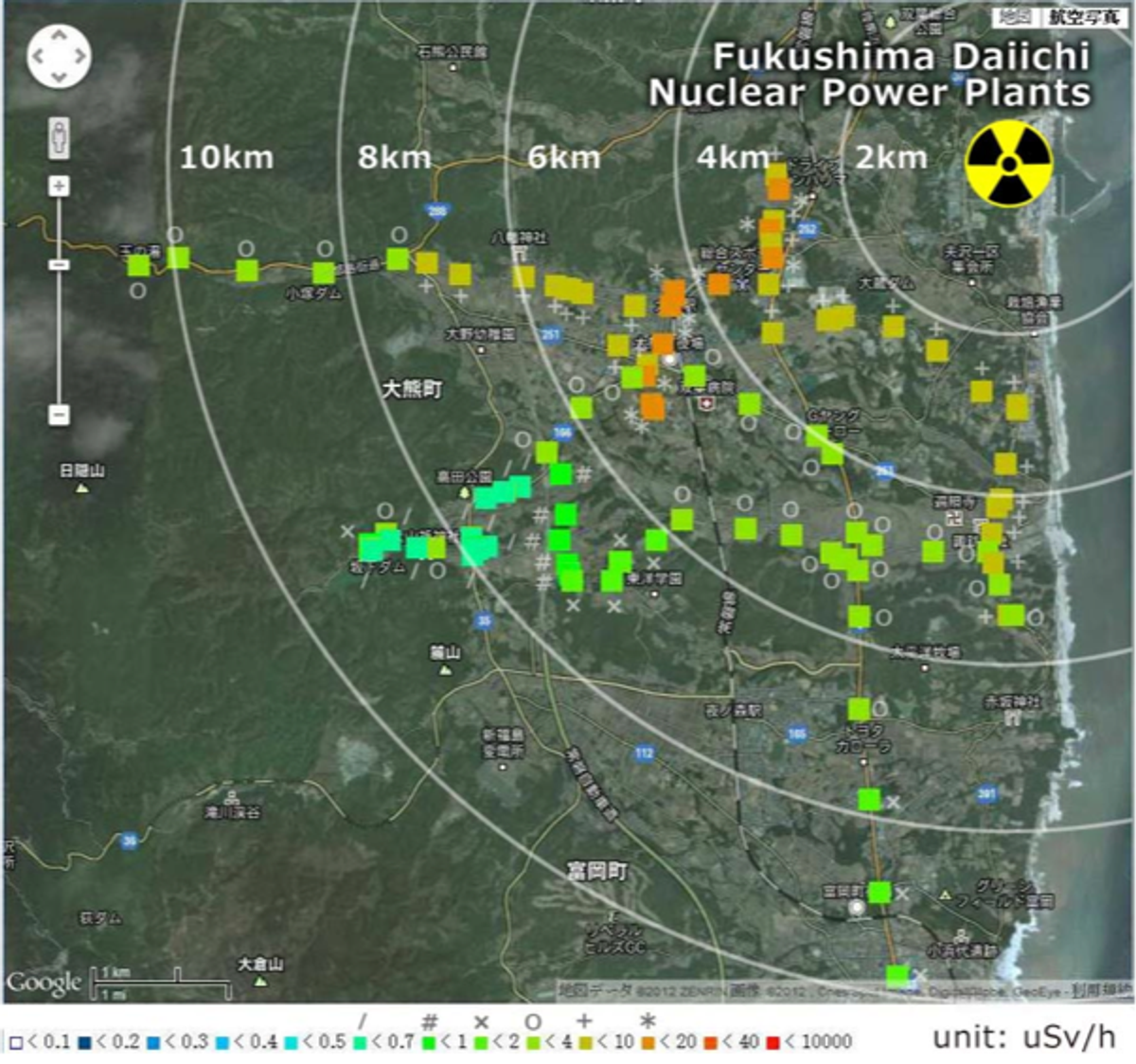Japan's wrecked nuclear power plant, Fukushima Daiichi, has been back in the headlines over the past weeks, reminding the world that the crisis isn't over. With radioactive cooling water leaking from tanks and contaminated groundwater seeping through the soil, the Japanese government has just committed to building a subterranean ice wall to contain tainted water and keep it from reaching the sea.
But while the world might be surprised by this reminder of ongoing disaster, the people living in Fukushima prefecture have been living with the crisis for more than two years now. Towns within a few kilometers of the shattered plant are still evacuated and off-limits to the public. Towns a little farther away have gradually been reopened to residents, yet many nervous families have chosen not to return to their homes.
In this climate of uncertainty, the citizen science groups Safecast and Radiation Watch have provided a critical service, both by building radiation monitors and collecting data from the fallout zone.
The volunteer group Safecast was organized in the days after the explosions at Fukushima Daiichi. Its founders first hoped to buy Geiger counters and distribute them to residents in the fallout zone so they could all do their own monitoring, but in the days after the accident, the world's entire supply of Geiger counters sold out. So the tech-savvy, DIY-inclined volunteers built their own device that they called a bGeigie, which they had strapped to their cars while they drove through Fukushima. The bGeigie takes a radiation reading every five seconds and tags it with the GPS location; that data is used to build the maps that Safecast puts online.
I recently went for a drive with Safecast volunteers Azby Brown (left) and Joe Moross through the Fukushima fallout zone, during which we checked out several sites that the government said it had decontaminated by removing topsoil and scrubbing buildings. At one site, a school playground, Brown found that the decontamination work had been relatively effective in the playground itself, but that radiation levels were considerably higher in the undergrowth on the edges of the play area.
The Safecast volunteers also loaned me a bGeigie to try out, and I brought it along when I visited the heavily contaminated town of Okuma, just a few kilometers from Fukushima Daiichi. The device recorded the radiation levels all along my route (see map below), with a high of 18.68 microsieverts per hour in one particularly hot spot. Anyone living at that spot would receive a yearly dose of about 166 millisieverts. The international limit for radiation exposure for workers at a nuclear power plant is 20 millisieverts per year.
Safecast has just revealed that it is working with Japan Post, the country's postal agency, to collect data. Safecast has put bGeigies on the motorbikes used by deliverymen in some Fukushima prefecture towns; as the drivers go about their daily rounds, they are collecting radiation data for the Safecast maps. This short video (in Japanese) about the collaboration explains that deliverymen are now canvassing the town of Koriyama.
The group sold its first open-source device for just US $23. The latest model works with both iPhones and Android phones, and takes two minutes to get a dose-rate reading (a considerable improvement on the 20 minutes it took for previous devices). This fifth generation device costs about US $70. Radiation Watch says there are now about 12 000 Pocket Geiger users.
Images: Radiation Watch, Safecast, Eliza Strickland
Eliza Strickland is a senior editor at IEEE Spectrum, where she covers AI, biomedical engineering, and other topics. She holds a master’s degree in journalism from Columbia University.






